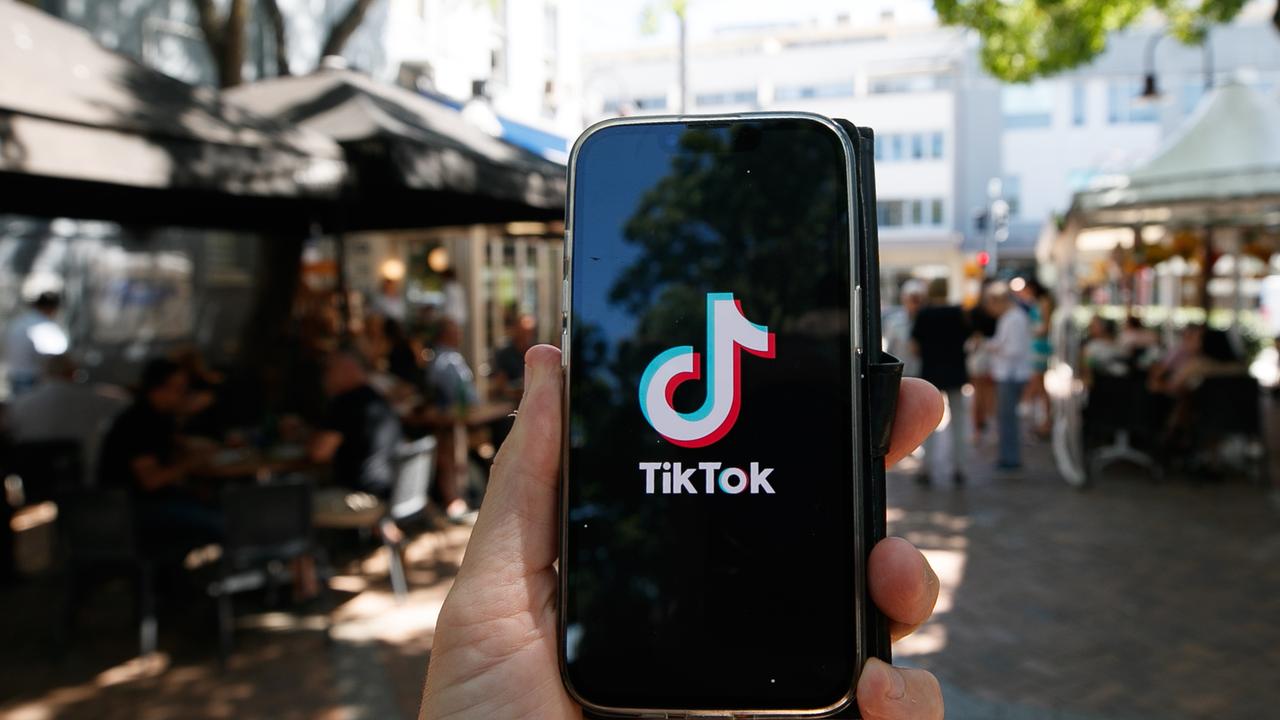Rapper and Yes campaign hopeful Briggs’ cut-through video for undecided voters
There’s a reason so many Australians rushed to share rapper Briggs’ Voice video last week, and it’s all to do with the secret weapon that is TikTok.
When rapper Briggs went viral on social media last week for posting a short video, the Yes campaign was bolstered by an outpouring of support.
As early voting opened ahead of the October 14 referendum, the Yorta Yorta man – fed up with wishy-washy arguments and misinformation – decided he had to do something.
In the skit, Briggs, alongside Freudian Nip’s Jenna Owen and Victoria Zerbst, took aim at apathy and confusing – and often competing – arguments against the Voice.
The comedy duo made reference to key arguments of both the conservative No: “it goes too far”, and the progressive No: “it doesn’t go far enough”.
In response, Briggs asked them to do a simple thing: Google it.
The video took off – being shared widely by everyday Australians and A-listers alike, attracting attention from New Zealand actor and director Taika Waititi and Hollywood star Jason Momoa.
It’s become one of the most-watched videos shared during the Voice to Parliament campaign, racking up almost one million views on TikTok alone across Briggs’ own page and that of Yes23.
The comments on Briggs’ own post flooded in: “Of all the lines run by the Yes campaign, this is the best one yet!”, “This is perfection … thank you for cutting through the bs so beautifully”, and “finally! A fun ad that nails it”.
Experts say the video has resonated so widely because it has done what official outfits Yes23 and the Uluru Dialogues could not – cut through politics and spoke to Australians as equals.

Intifar Chowdhury, an associate lecturer at ANU’s school of politics, said non-affiliated videos like Briggs’ were effective because they weren’t official.
“We know as researchers that Australians don’t like being talked down to,” she said.
“If you have corporate Australia asking you to support the Voice, or a celebrity asking you to support the Voice, or a politician asking you to support the Voice, there might be a certain amount of aversion.
“Whereas if you have someone who is not as probably politically invested, like your neighbour or your yoga instructor, you might be like, ‘Oh, OK, an average Australian is asking me to think about the issue … There probably is something that might affect me’.”
Around the same time as Briggs’ post, comedian Tom Cardy’s video also went viral for his explanation about changing the Constitution.
He pulled in more than 1000 comments, among them: “This is excellent. The idea of a Constitution growing and maturing is why I’m voting yes”, and “this is immaculate”.
Ms Chowdhury said apolitical pitches were especially effective for undecided voters.
But whether or not Briggs’ video, or Cardy’s, is enough to convince the still-undecided voters – numbering potentially in the millions – ahead of Saturday’s referendum remains to be seen.
Just as official Yes outfits and non-affiliated TikTok creators alike have been ramping up their efforts to convince Australians, the other side has been doing the same thing.
Fair Australia, the main No campaign has proven significantly more popular on TikTok, with nine of their videos attracting more than one million views each.
One video has pulled in 2.3 million views alone.
Fair Australia said they’d had 32 million views on TikTok alone over the past 60 days.
Leading No campaigner Jacinta Nampijinpa Price has proven a popular face on the app, as has ex-NSW Liberal candidate Freya Leach, who pulled in 873,000 views on a video sharing her reasons for voting No.
Ms Chowdhury said it was interesting to watch the No campaign do so well on the platform because young people – the main demographic on TikTok – were more likely to support the Voice.
She said it showed how effective social media was in influencing opinions.
“There’s this big group of people who are undecided, people who are mostly disinterested in politics, people who are less likely to respond to the news or the official campaigns, and these are the people who are most likely to be influenced by just a random video,” she said.
But researchers have also been concerned by the amount of mis- and disinformation being shared on TikTok.
Ms Chowdhury said in the wash-up, there would need to be some hard conversations about how social media was regulated in the years ahead.
“We really need to think about how we police that,” she said.
“It’s not illegal for you to lie, right. Going forward as a nation, this is probably a law-enforcement thing. The legal minds of the country have to probably think about how political advertisement is allowed to operate and how as a nation can we police the spread of disinformation or intentional lying.”



